Discover what the different violin bow holds are!
How you hold the bow while playing the violin is truly important. It can make a surprisingly big difference between sharp and smooth sounds, professional or beginner sounds. There are various violin bow holds that violinists and fiddlers use, and it is something that has been evolving along with the violin.
In this article, I would like to present you with the most commonly used violin bow holds and help you learn how to distinguish them so you can choose what suits you best.
Before reading on, you may want to recap the bow parts, which I will mention below. Here’s my article Parts of the Violin Bow: A Complete Overview.
Now, let’s have a closer look at the bow holds that we can see most often among violinists.
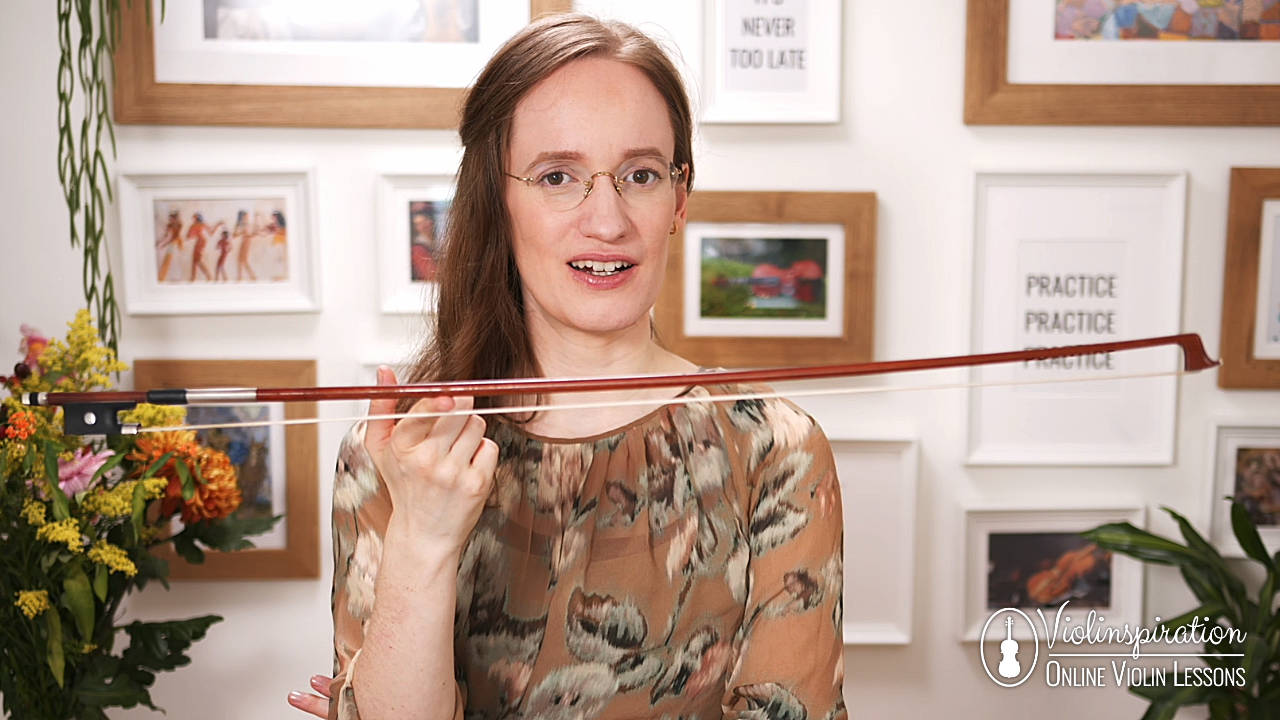
1. Franco-Belgian Bow Hold
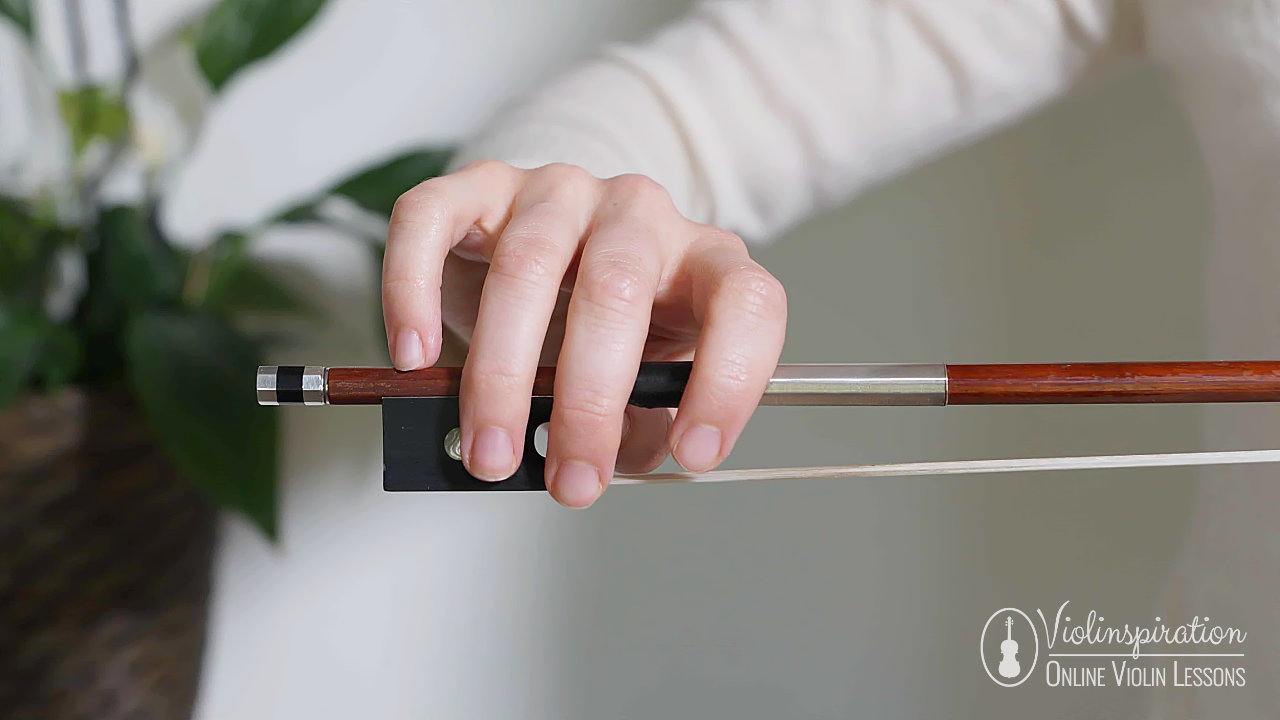
The Franco-Belgian bow hold is probably the most common bow hold used today and it’s the hold I teach in my post How to Hold a Violin Bow: The 6 Steps to a Perfect Bow Hold, as well as in my online school – Julia’s Violin Academy.
This bow hold provides great control over the bow, as the grip is very solid. It also allows you to adjust the bow pressure by using the weight of your arm. Those are advantages that can come in handy when you want to use different sound qualities. Having better control of the bow allows you to be precise, especially in techniques like spiccato.
How to Hold a Bow the Franco-Belgian Way
In the Franco-Belgian hold, the fingers are nicely curved around the frog. The space between the middle and ring finger is very small. These two fingers partially cover the frog and help control the tilt of the bow.
The distance between the index finger and the middle finger, as well as the distance between the ring finger and the pinky finger, are slightly bigger. The index finger touches the stick with the second phalanx and the first joint. Together with the pinky finger, it transfers the weight of the arm to the bow.
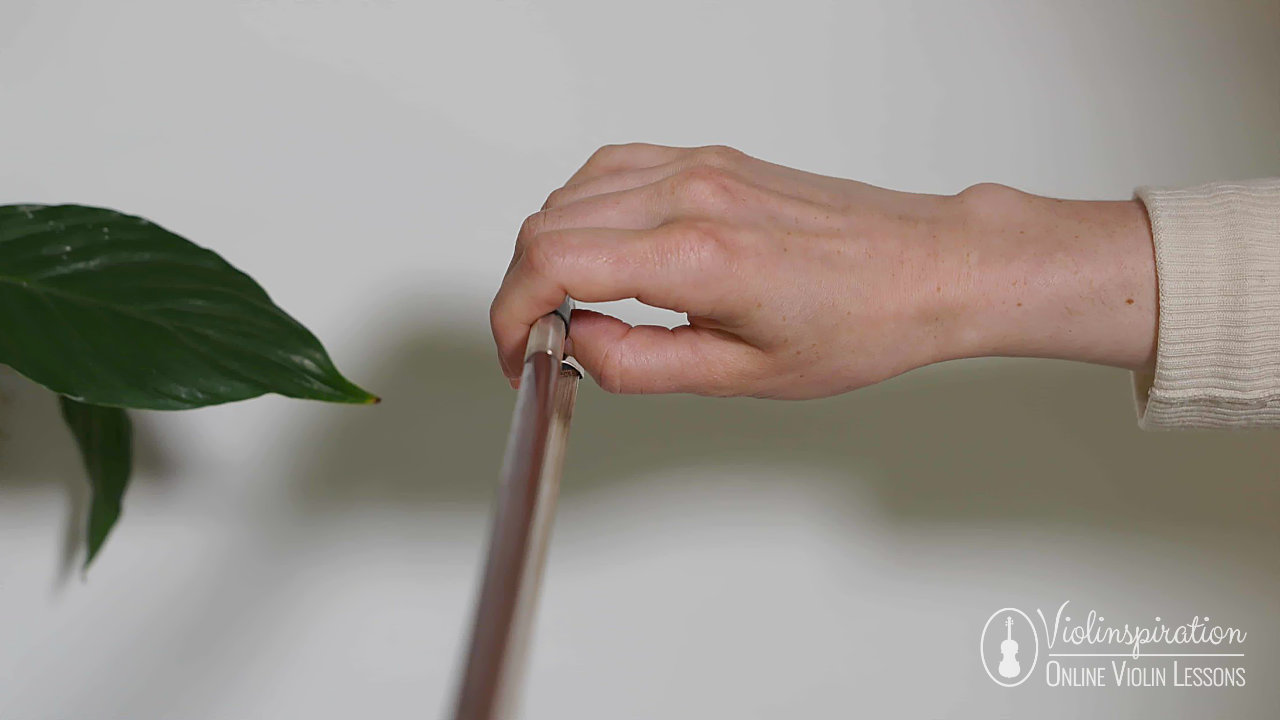
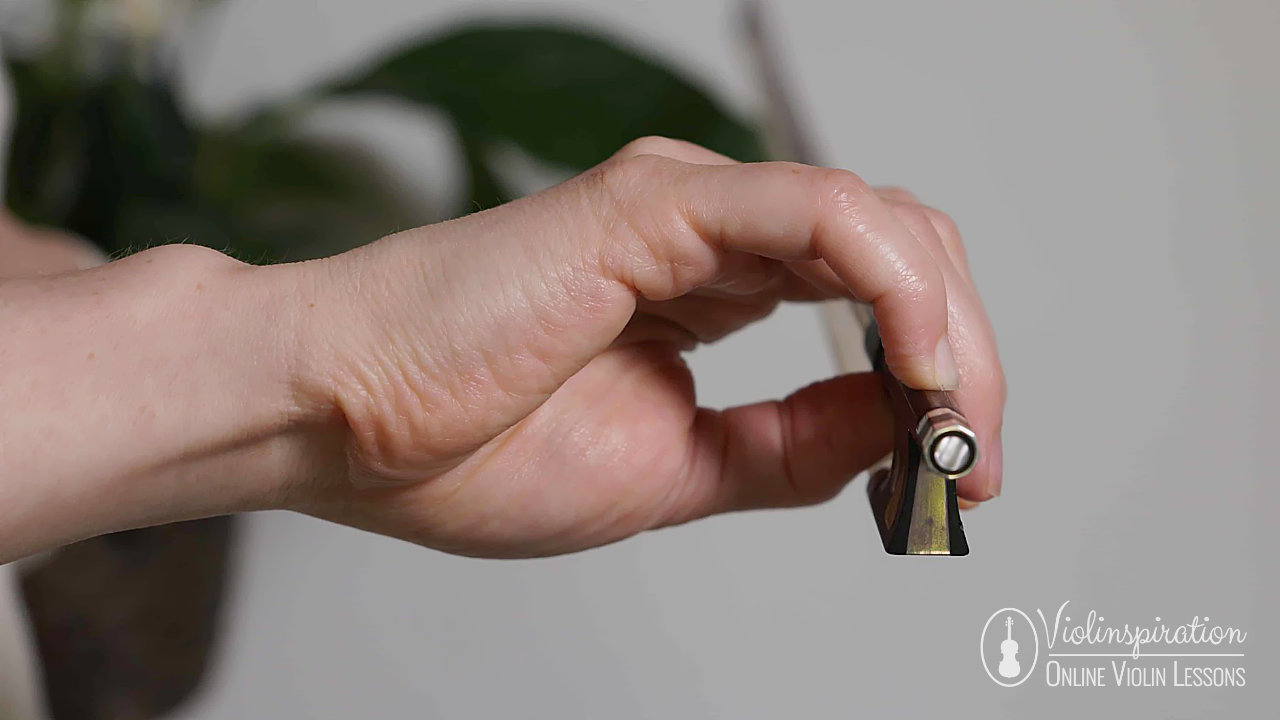
The thumb is below the middle finger, rounded and touching the stick. Some use the leather on the stick as support for the thumb, or as a boundary.
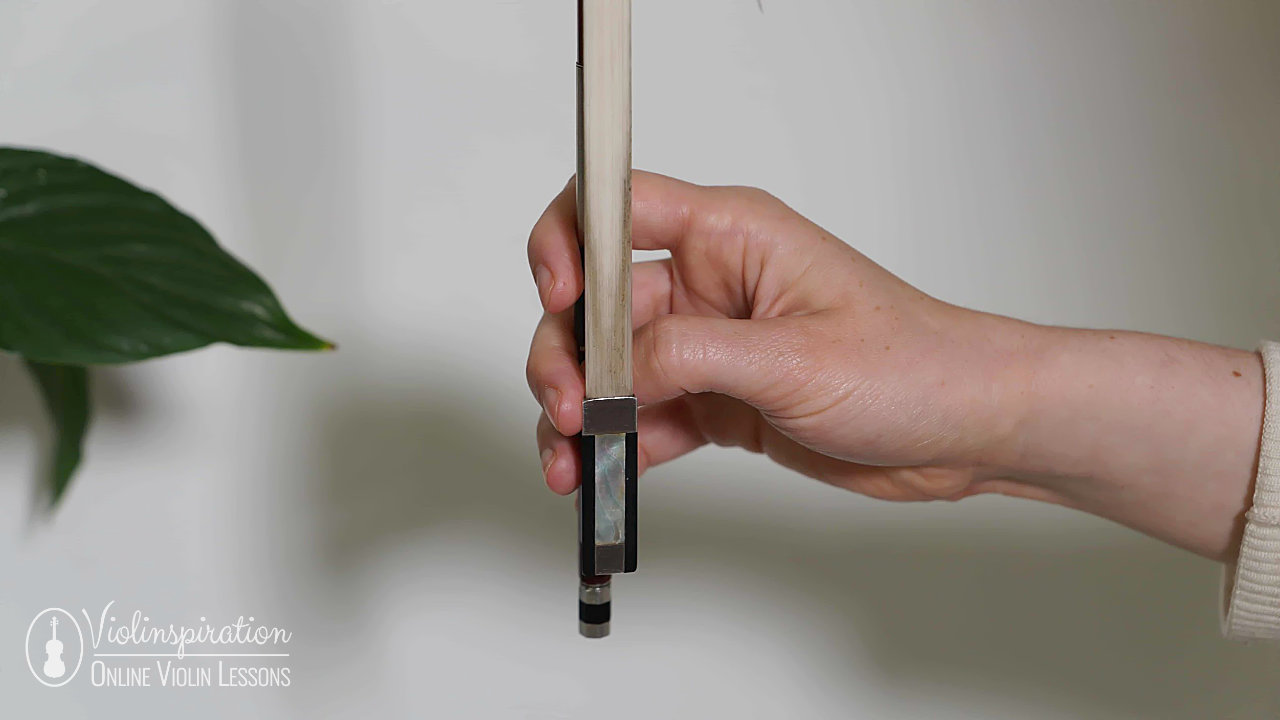
The wrist is almost a straight line from the hand to the elbow, it can be slightly elevated.
Examples of Franco-Belgian Bow Hold
Itzhak Perlman, one of the most well-known violinists alive, is using the Franco-Belgian bow hold. Here’s a video explaining it in detail:
In this video, however, playing Beethoven’s violin concerto, you can see his grip changing sometimes, depending on the sound he wants to produce, as well as the speed he wants to play and other factors. While he’s well-known for using the Franco-Belgian bow hold, this shows that he can be versatile when needed.
Other violinists using predominantly the Franco-Belgian bow hold include:
- Yehudi Menuhin
- Issac Stern
- Maxim Vengerov
2. Russian Bow Hold
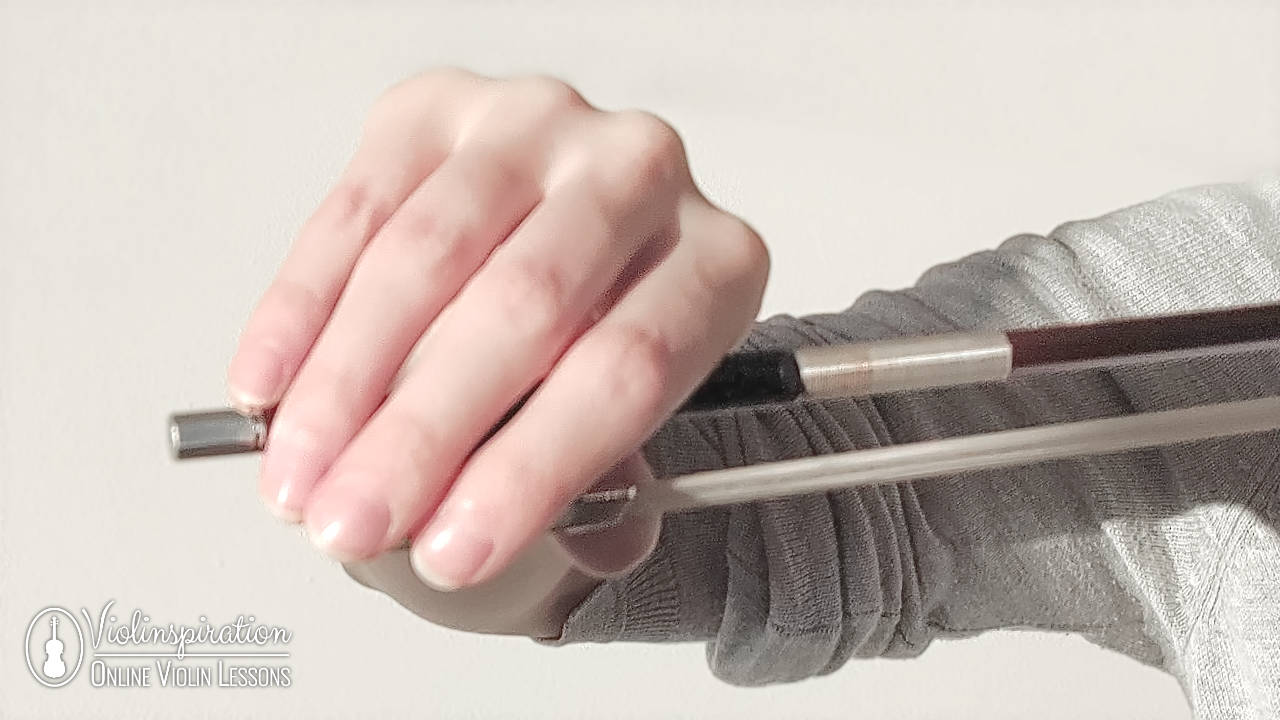
The second most commonly used and taught violin bow hold is the Russian bow hold.
This bow hold is used mostly by those taught in the Russian school and provides more speed and power. The sound is louder but the reach is a bit more limited. For very fast passages it actually helps, as the hand does not feel stiff when creating the required pressure.
If you play with different dynamics, you could notice that with the Russian bow grip, forte is powerful and the piano sound is a bit “flautando” (soft, whistling, similar to playing with a skewed bow). Also, when raising the wrist, this hold might create additional pressure.
How to Hold a Bow the Russian Way
In the Russian bow hold, the wrist and fingers are tilted towards the bow tip. The first finger touches the stick around the third joint or phalanx.
The pinky finger is rather straight (depending on the length of your fingers). The middle and ring fingers are almost straight too and they cover the frog similarly as in the Franco-Belgian bow hold.
Examples of Russian Bow Hold
The Russian bow grip was mostly developed and taught in Russia but it’s not exclusive to that country. As a matter of fact, many Russian violinists can be seen using the Franco-Belgian bow hold.
Some well-known violinists using this bow hold are:
- David Oistrakh
- Jascha Heifetz
- David Garrett
The video of David Garrett is the recording of him breaking the Guinness World Record for the fastest violinist. Notice how he is taking advantage of the speed that the Russian bow hold offers. Also, his sound is quite loud. Now compare it with Menuhin’s video – his sound is softer but has more layers.
Other Types of a Bow Hold
When we look for information about 15th-century bows, we can quickly learn that they were used also for playing viols and probably other stringed instruments of that time.
In the early beginnings, the frog used to be detached so there was no mechanism to adjust the bow hair tension. When needed, the payer had to use the thumb to tighten the hair, which greatly influenced the bow hold. Moreover, there was no standard bow hold, so each violinist was using the hold they thought was more fitting.
Historically, the first two types of bow holds were called French and Italian.
The French Bow Hold
The most characteristic feature of the French hold is that the thumb touches the bow hair near the ferrule. This way the thumb could help tighten the bow hair before the screw mechanism was developed.
This hold was most common in dance music.
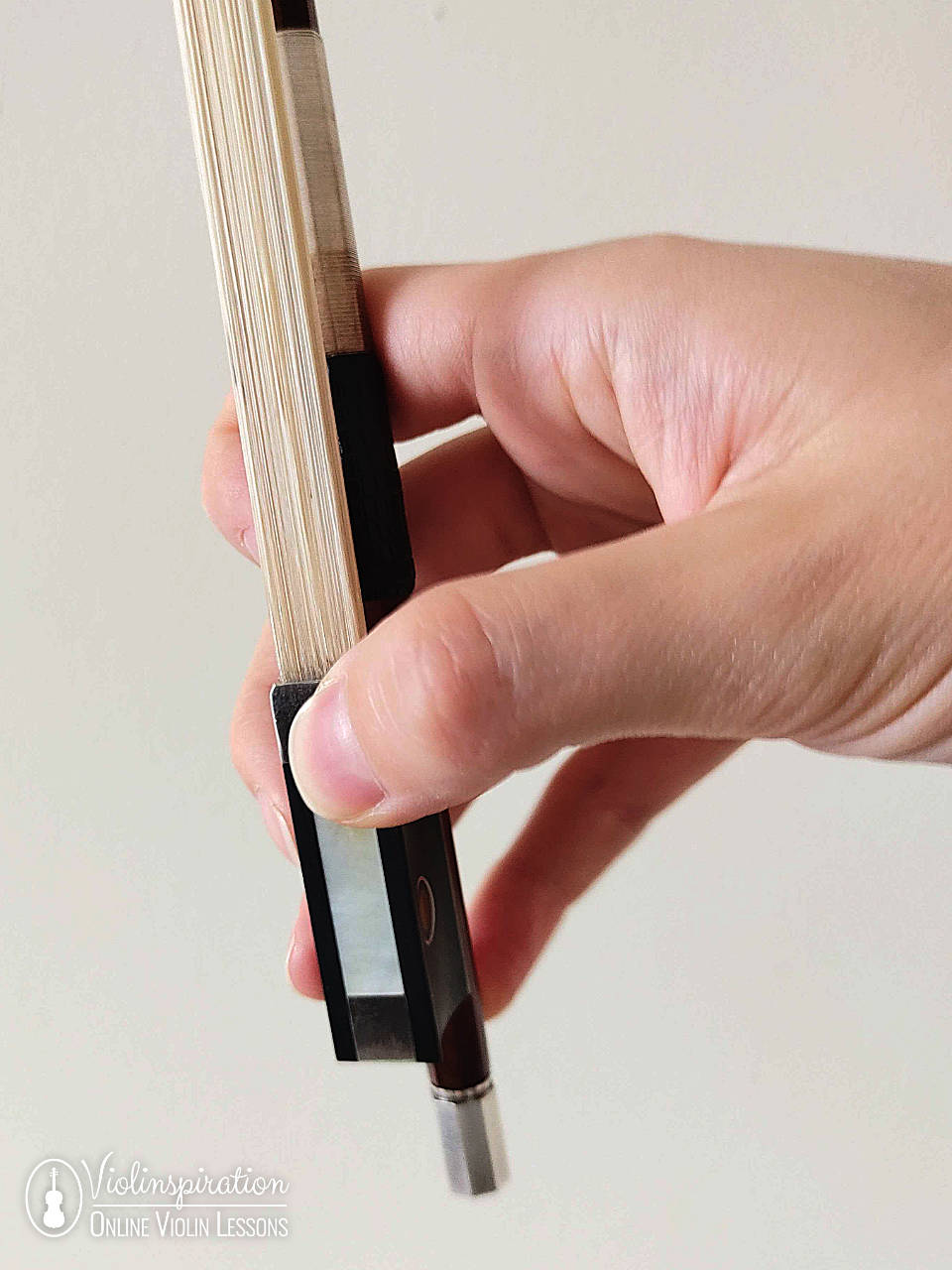
The Italian Bow Hold
In the Italian hold, the thumb touches the bow stick, just as we do nowadays, and the hand could be placed at the frog or a bit higher on the bow stick.
This hold was more feasible for playing a more difficult repertoire such as sonatas.
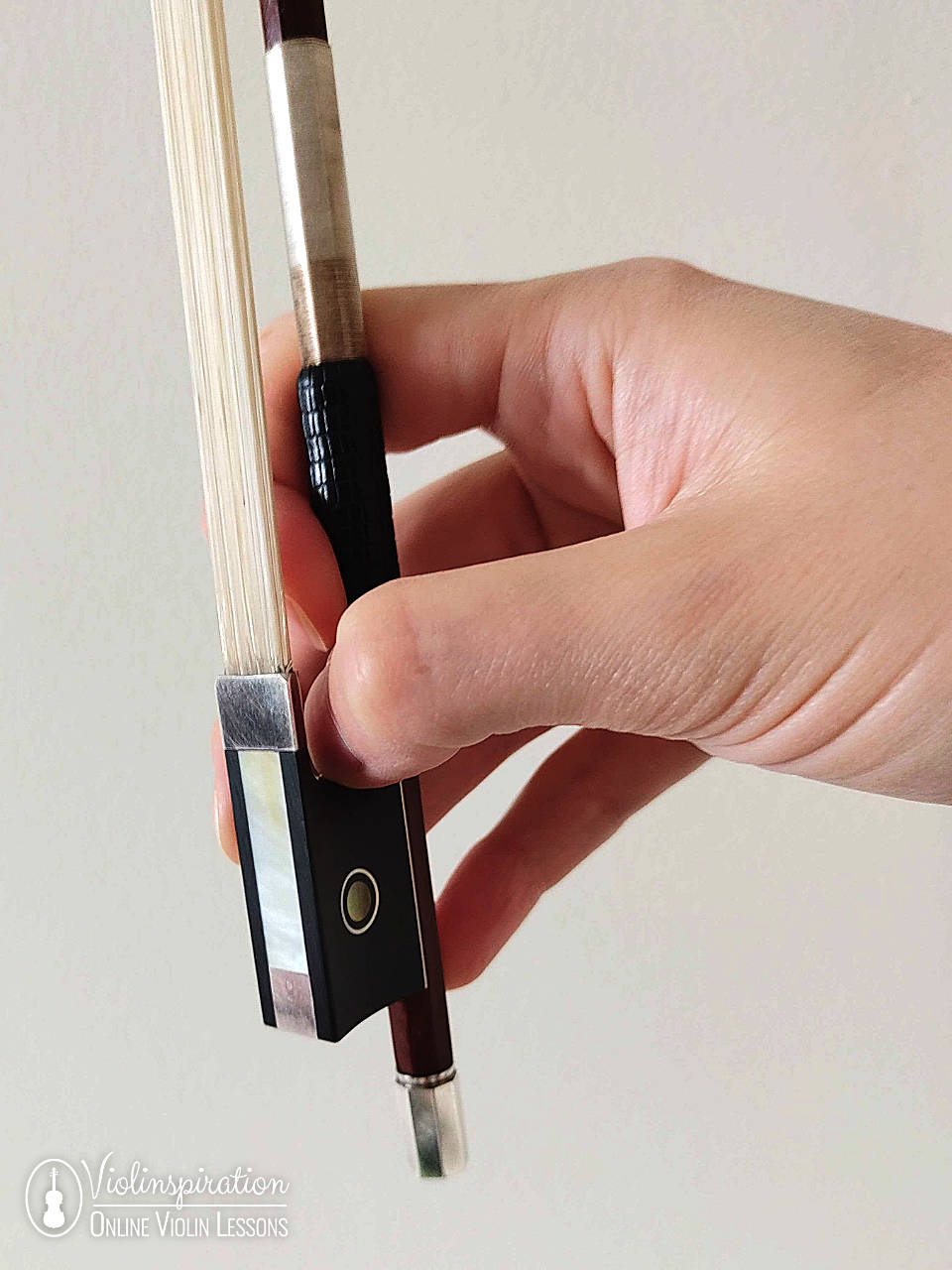
Both bow holds were used around the same time, regardless of the region.
Baroque Bow Hold
In the Baroque bow hold, you place your fingers on the stick, a few inches above the frog.
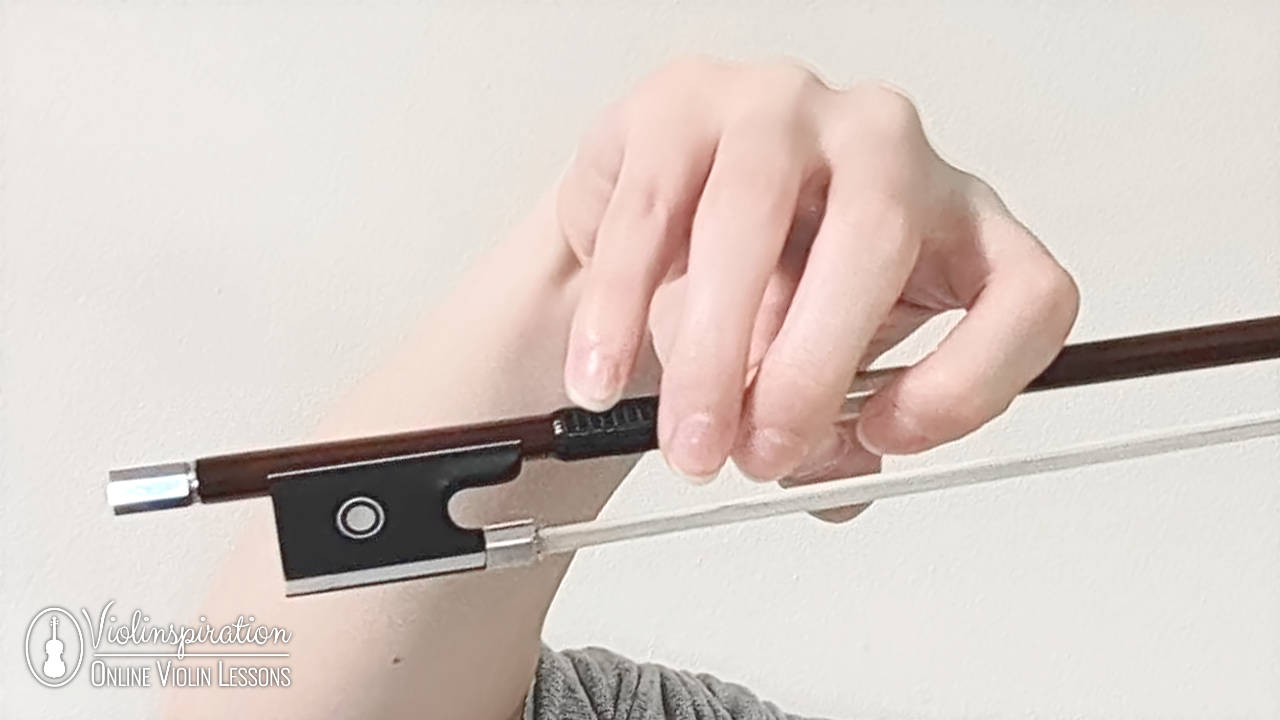
Keep in mind that this technique was used on a different bow than the modern ones, and also there’s not one universal “Baroque bow hold”, as the technique of the instrument was not written in stone yet. You can apply this grip with a modern bow, especially if you’re playing Baroque repertoire.
Some violinists prefer to play the music as authentic as possible (then you may call it a historically informed performance), while others prefer to perform it with a more modern approach. Regardless, you might find that this way of holding the bow feels a bit lighter, so the sound produced with this technique is a bit closer to Baroque instruments, which might suit you more.
Here’s a video with a Baroque bow and authentic instruments:
German Bow Hold
Among the bow holds that were developed through centuries, there’s also a German bow hold. With this hold, your fingers are almost straight. They are close next to each other and don’t hold the frog but rest at the stick.
You can try out this hold by placing your first finger at its first joint on the stick. Add other fingers as in the picture and the thumb under the middle finger. How does this hold feel to you?
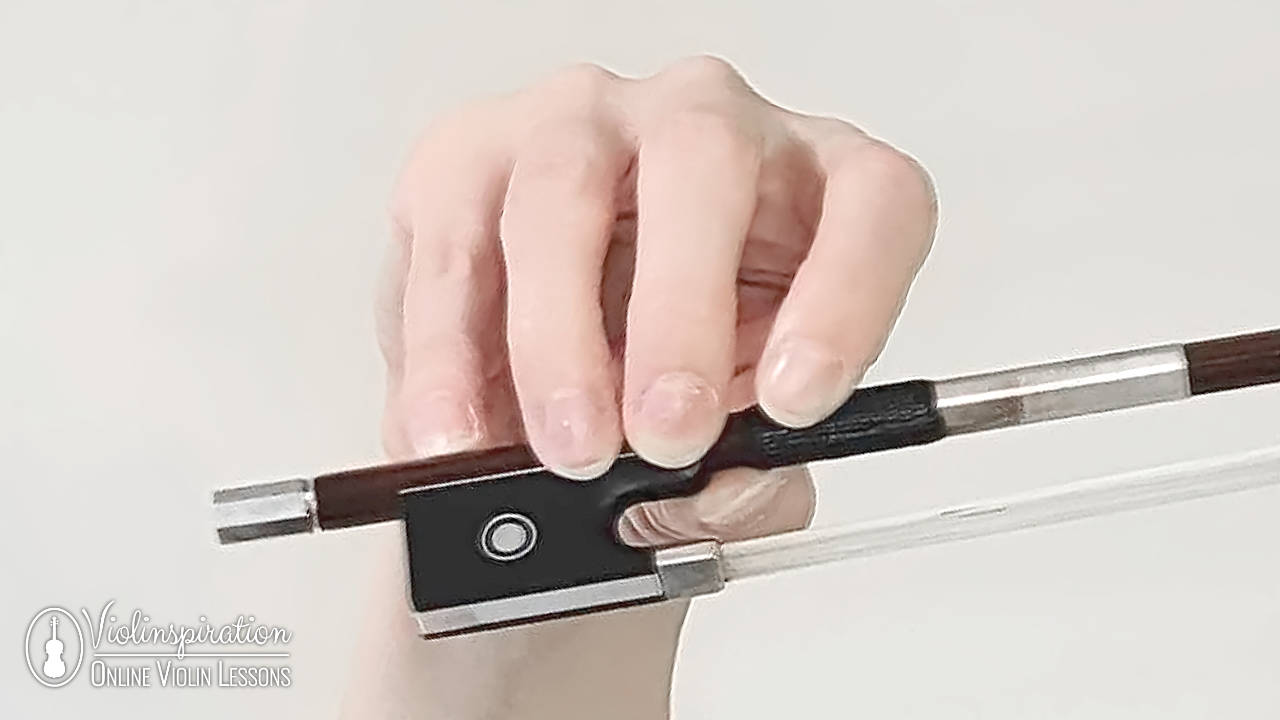
Galamian Bow Hold
The Galamian bow hold is something that Ivan Galamian, a violin teacher of many renowned violinists, came up with. The methods he used were a combination of the French school and the Russian school.
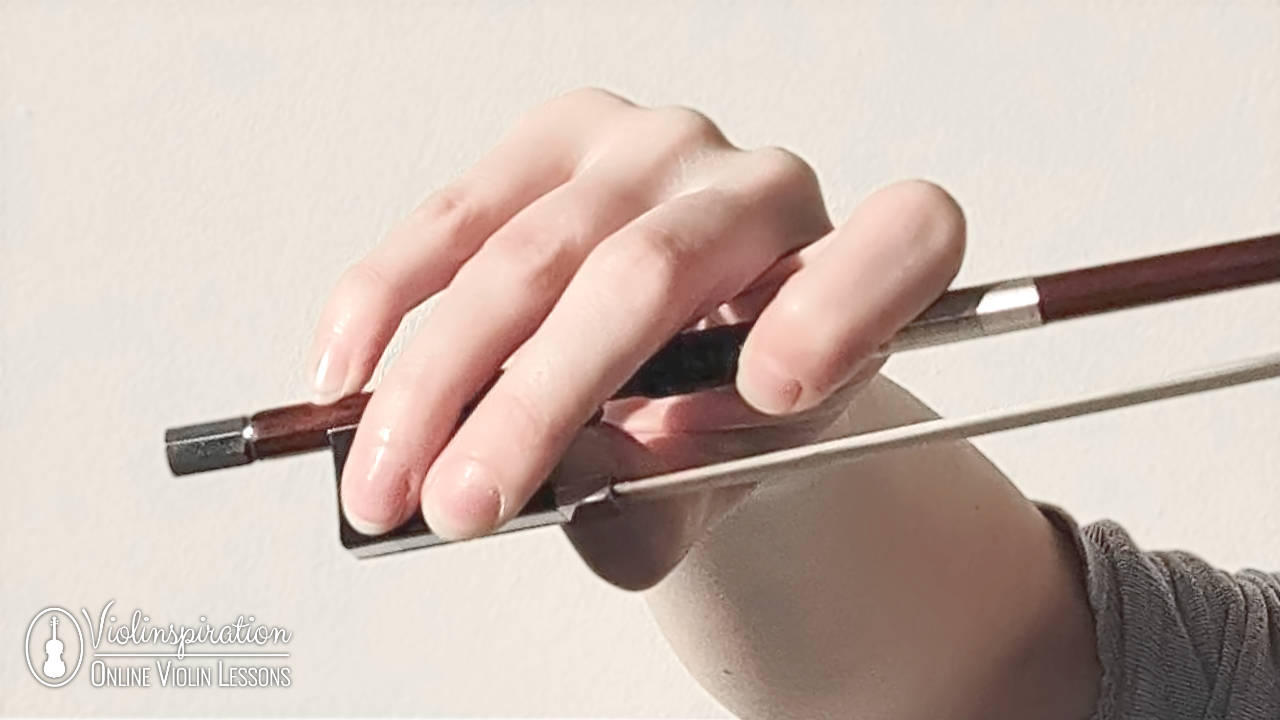
The bow hold is very similar to the Franco-Belgian, though the wrist is flatter, and the index finger is a bit further from the middle finger, in comparison to the rest of the fingers which have almost equal distance.
The flexed index finger feels very natural. This hold, while it was believed to be used predominantly by beginner violinists, has gained its supporters.
Here’s a video of Ivan Galamian giving a masterclass:
Fiddlers’ Bow Hold
When it comes to fiddlers, we can observe one more bow hold. In this case, the right hand is more pronated (the palm rotates counterclockwise) than in the Franco-Belgian hold, and often the pinky finger will be raised above the bow stick. The middle and ring finger are usually close to the index finger.

Have a look at the following videos and try to observe the nuances:
- Martin Hayes – Eileen Curran
- Liz Carroll
FAQ
Let’s now have a look a the most frequently asked questions about violin bow holds.
How many violin bow holds are there?
There are two main bow holds, the Franco-Belgian and the Russian bow hold. There are also less frequently used holds: Galamian, German, Baroque, and historically, French and Italian.
Please remember that the list of bow holds is not limited to the above, as various holds were developed over the centuries along the development of the violin and the bow, and also different violin pedagogues may recommend slight variations in their teaching.
What is the best violin bow hold?
The best bow hold is the one that suits you best and gives you the required result. Moreover, as you use different bowing techniques, you will need to adjust the bow grip, so for example, you may find it suitable to switch between Franco-Belgian and Russian bow hold to play a certain piece.
What you should always keep in mind is that your right hand should not have any tension, the hold should feel natural, and you can be versatile with your hold.
What are the advantages of the Franco Belgian hold?
The Franco-Belgian hold provides more control over the bow, you can easily change the bow pressure, as well as play with different sound qualities.
While playing at high speed can be a challenge, it is perfect for playing bouncing techniques such as spiccato. With this hold you can play loudly, it’s not easy to be as loud as possible.
What are the advantages of the Russian bow hold?
The Russian bow hold gives you easy access to speed and a loud sound. While playing very fast, the hand rarely feels stiff, due to the grip used by mostly the index finger.
While perfect for some repertoire, it might not be very helpful when playing more delicate sounds as the piano is a bit too soft. That’s not to say that you can’t produce other sound qualities, but it’s more of a challenge.
What is a Baroque bow hold?
In the Baroque bow hold you place your fingers on the stick, a few inches above the frog. The fingers nicely curl around the stick, similar to the modern or Franc-Belgian bow hold.
The Baroque bow hold results in producing less volume and helps mimic the sound of the Baroque violin.
What is the handle of a violin bow called?
The handle of the violin bow is called the frog. Inside is a mechanism for tightening or loosening the hair of the bow.
Conclusion: You Can Be Versatile!
It’s not written in stone to follow one or the other bow hold, nor one or the other is better. It’s a matter of what repertoire you’re interested in playing, and which bow grip feels more comfortable to you. Also, aspects such as your fingers’ length and your violin hold matter.
Probably the best would be to study different holds and use them depending on the repertoire. Many well-known violinists change bow grip depending on the piece or the bow stroke they are playing, which allows them to have the benefits of different holds.
However, it’s worth sticking with one bow hold for most of your playing, whichever feels better for you, and change when needed.
When you are starting to learn how to play the violin and have no experience with any bow hold, I recommend you begin with the Franco-Belgian violin bow hold. This way, you will learn the role of each finger and the bow arm, and later, when you are much more comfortable with using the bow, you can experiment with other bow holds.
If you’re a member of my Academy, click here and check what are the 7 steps to a beautiful bow hold or watch the recording of a live class Technique Sessions: Bow Hold & Bowing.
























